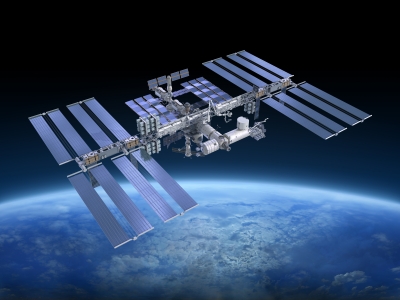
Worms from the heights of space and the depths of the earth were in the news last week, one well-known species soaring to the heavens as part of a space flight experiment and a previously undiscovered species revealing the surprising extent of multicellular life in the hidden depths of earth.
The Worm from the Heavens
Caenorhabditis elegans perhaps qualifies as the most well-known of all worms. This 1mm roundworm, is a staple model organism in molecular biology. It’s easy to grow and store, possesses a simple neuronal network, and is transparent, making it easy to study cell differentiation and development. It was the first multicellular organism to have its genome sequenced, and the developmental fate of all its somatic cells has been studied. In some ways we know C. elegans better than we know ourselves.
It is perhaps not surprising then that C. elegans was among the first experimental organisms to be used in space-based studies. C. elegans survived the 2003 crash of the Space Shuttle Columbia, and some of the descendents of these worms were part of a recent mission to the International Space Station. Research published in PLoS ONE last week showed how space-based C. elegans studies are being used to investigate potential treatments for problems such as muscle and bone loss that are associated with life in a low-gravity environment. Such problems must be overcome if longer manned missions are to become a reality. The paper points out that drug therapy is limited in space flight by short shelf-life due to radiation damage, and that RNA interference (where RNA is used to turn off targeted genes) is a more attractive treatment option because RNA can be produced easily and cheaply during flight. It sounds like a great idea; however, no one knows if RNA interference operates in space the same way that it does on earth. Does the cellular machinery involved become damaged? Is the RNA stable or is it more susceptible to radiation damage? The experiments published in PLoS ONE were designed to begin to address these questions.
The authors performed duplicate experiments on the ground under identical environmental conditions as the space station, except for gravity. They found that after 8 days of space flight, there was no difference between the results obtained on earth or in orbit. The cellular components required for RNA interference appeared to work normally, and they were also able to use RNA interference to silence the genes for proteases involved in degradation of the muscle protein alpha-actin in both ground-based and space-based experiments.
And the One from Hell
So C. elegans is now making a contribution to the future of manned space flight to other planets. How can the poor “worm from hell” compete with that? Surprisingly well it turns out. Despite publicity shots revealing remarkable likeness to the creature that swallowed Captain Jack in the second Pirates movie and perhaps because of headlines announcing the “Devil Worm”, the new species Haliocephalobus mephisto generated its own brand of excitement last week.
If C.elegans is the most known worm, then H. mephisto is now officially the most unknown. Discovered more than 1km down in the depths of an African mine and introduced in Nature last week, this 0.5mm worm shattered the belief that these hot, deep reaches of the earth are the home of only single-celled organisms. In the process it also sparked some new ideas about the kinds of places that might harbor complex lifeforms. (Perhaps the sub-surface of inhospitable planets?) The authors of the Nature paper found H. mephisto and 3 other nematode species in deep-earth samples of water from boreholes drilled deep into South African mines. The paper goes into details about how they were able to rule out surface contamination and determine that the sample organisms were indeed part of an ecosystem hidden deep within the earth.
I think it is cool that both these papers were published in the same week. It reminds me that even as we strive towards the possibility of exploring the exciting, unknown reaches of space, our own world is still capable of surprising us.
Here are the Papers:
Etheridge, T. et al. (2011) The Effectiveness of RNAi in Caenorhabditis elegans Is Maintained During Spaceflight. PLOS ONE, 6(6).
Borgonie, G. et al. (2011) Nematoda from the terrestrial deep subsurface of South Africa. Nature 474, 79–82.
Isobel Maciver
Latest posts by Isobel Maciver (see all)
- 3D Cell Culture Models: Challenges for Cell-Based Assays - August 12, 2021
- Measuring Changing Metabolism in Cancer Cells - May 4, 2021
- A Quick Method for A Tailing PCR Products - July 8, 2019

Very interesting post, Isobel. Thanks for the link to the image of Haliocephalobus mephisto and after viewing it I think 1) bad dreams may be part of tonight’s sleep and 2) your blog may prophesize summer 2012’s blockbuster movie! A hot bath may never be the same again.
Well at least the worm is only 0.5mm long!